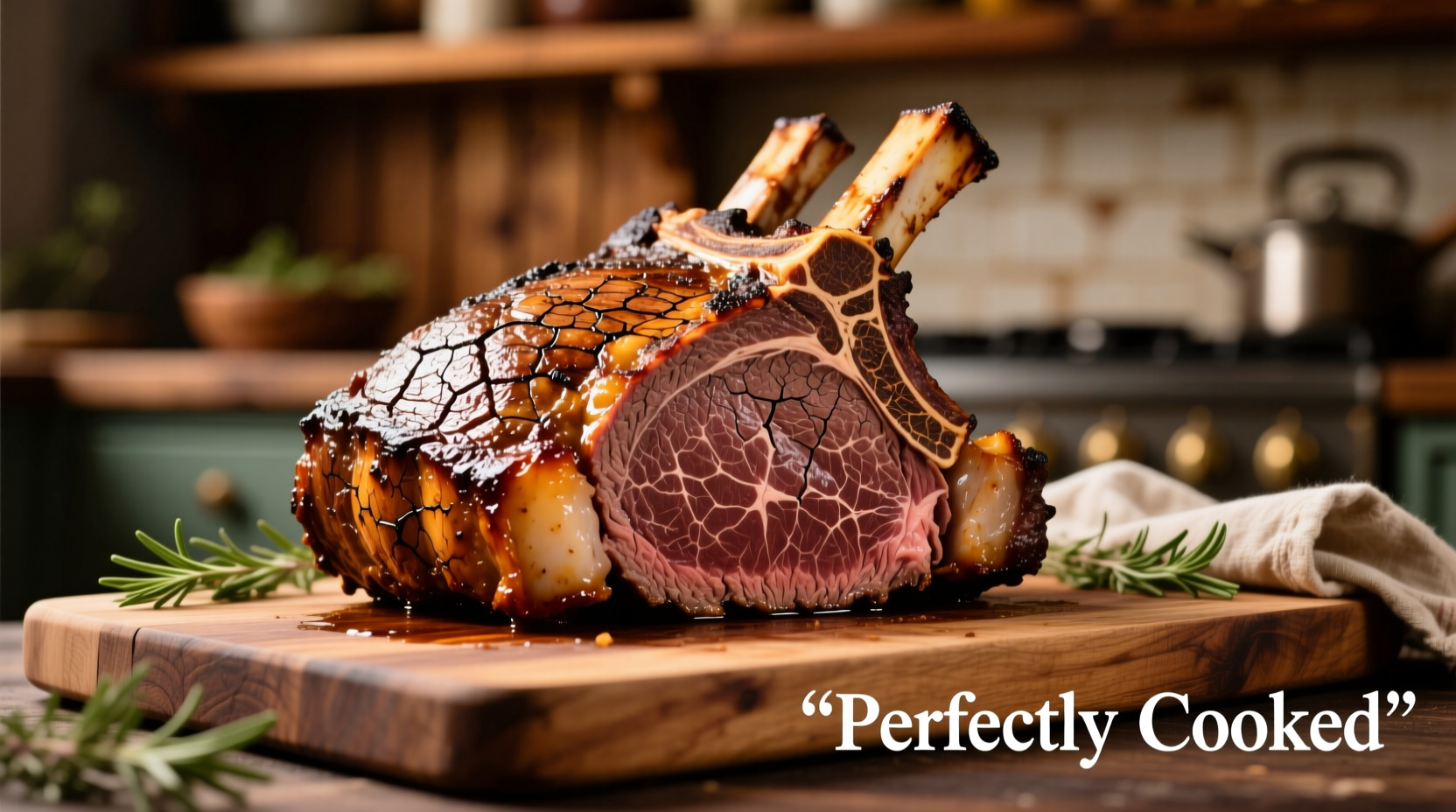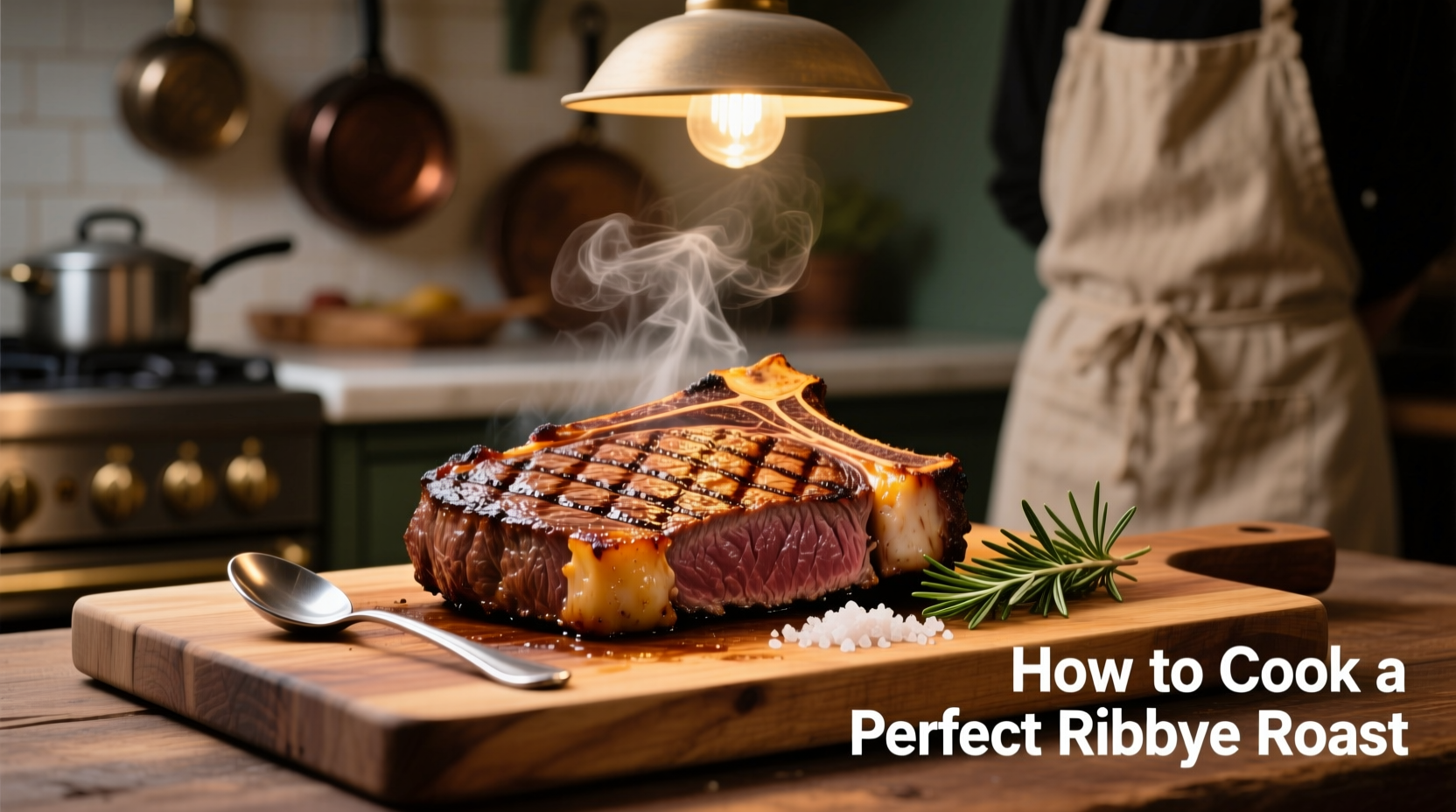The perfect beef ribeye roast requires a 3-4 hour rest at room temperature, seasoning with coarse salt 48 hours before cooking, and roasting at 225°F until reaching 125°F internal temperature for medium-rare. Allow 20-30 minutes resting time before slicing across the grain for maximum juiciness.
There's nothing quite like a perfectly cooked beef ribeye roast—tender, juicy, and bursting with rich marbling that melts into every bite. As a cut prized for its exceptional flavor and tenderness, the ribeye roast deserves a cooking method that honors its quality. Whether you're preparing Sunday dinner or hosting a special occasion, mastering this technique ensures restaurant-quality results in your own kitchen.
Why Ribeye Roast Deserves Special Attention
The ribeye roast, also known as prime rib, comes from the rib section of the cow (ribs 6-12). Its generous marbling creates unparalleled flavor and moisture during cooking. Unlike leaner cuts, ribeye requires careful temperature management to render the fat properly without drying out the meat. Professional chefs consistently rank ribeye as one of the most challenging roasts to perfect due to its variable thickness and fat content.

Your Essential Ribeye Roast Toolkit
Before you begin, gather these critical tools that make the difference between good and exceptional results:
- Instant-read thermometer (critical for precision)
- Heavy-duty roasting pan with rack
- Butcher's twine for tying
- Coarse kosher salt (fine salt burns easily)
- Pepper grinder (freshly cracked makes a difference)
- Aluminum foil for resting
Selecting the Perfect Ribeye Roast
Quality begins at the butcher counter. Look for these characteristics:
- Marbling: Abundant, fine white fat streaks throughout the meat
- Color: Bright cherry red (avoid gray or brown tones)
- Thickness: Minimum 4 inches for proper heat distribution
- Grade: USDA Prime offers best marbling, though Choice works well
- Size: Allow 1 pound per person (bones account for 30% of weight)
Advanced Preparation: The Secret to Flavor Development
Most home cooks rush preparation, but professional results require patience:
- Dry brine 48 hours ahead: Generously coat with coarse salt (1 tablespoon per 5 pounds), refrigerate uncovered
- Bring to room temperature: Remove from refrigerator 3-4 hours before cooking
- Tie properly: Use butcher's twine to create uniform shape for even cooking
- Pat dry: Critical for achieving proper sear—moisture prevents browning
| Cooking Method | Temperature | Time per Pound | Best For |
|---|---|---|---|
| Low & Slow Roasting | 225°F | 25-30 minutes | Large roasts (6+ lbs), even cooking |
| Reverse Sear | 250°F then 500°F | 30 minutes + 8-10 min | Perfect crust, precise doneness |
| Traditional Roasting | 325°F | 18-20 minutes | Smaller roasts, faster cooking |
Step-by-Step Cooking Process
Phase 1: The Low-Temperature Roast (2-3 hours)
Preheat oven to 225°F. Place roast fat-side up on rack in roasting pan. Insert thermometer into thickest part (avoiding bone). Roast until internal temperature reaches 115°F for medium-rare (approximately 25-30 minutes per pound). This slow cooking renders fat properly while keeping meat tender.
Phase 2: The High-Heat Finish (8-12 minutes)
Increase oven temperature to 500°F. Return roast to oven until exterior reaches 130°F internal temperature (about 8-12 minutes). This creates the perfect medium-rare center with a beautifully caramelized crust. The temperature difference between exterior and interior should be no more than 15°F.
Phase 3: The Critical Resting Period (20-30 minutes)
Transfer roast to cutting board, tent loosely with foil, and rest for 20-30 minutes. During this time, internal temperature will rise 5-10°F (carryover cooking), and juices redistribute throughout the meat. Skipping this step causes precious juices to spill out when slicing.
Avoid These 5 Common Ribeye Roast Mistakes
- Mistake: Not dry brining in advance
Solution: Salt at least 48 hours before cooking for deeper flavor penetration - Mistake: Cooking straight from refrigerator
Solution: Allow 3-4 hours at room temperature for even cooking - Mistake: Relying on time instead of temperature
Solution: Use instant-read thermometer—time varies by roast size - Mistake: Cutting too soon after cooking
Solution: Wait full 20-30 minutes resting time for juicier results - Mistake: Slicing with dull knife
Solution: Use sharp carving knife and slice across the grain
Serving Your Perfect Ribeye Roast
Slice across the grain into 1/2-inch thick portions. Serve immediately with jus made from pan drippings. For special occasions, pair with horseradish cream and roasted vegetables. Leftovers transform beautifully into next-day steak sandwiches or hash—the marbling keeps the meat moist even when reheated.
When to Choose Alternative Cooking Methods
While oven roasting delivers classic results, certain situations call for different approaches:
- Smaller gatherings (2-3 people): Consider boneless ribeye roast for easier portioning
- Outdoor cooking: Reverse sear on grill with indirect then direct heat
- Time constraints: Traditional 325°F method reduces total cooking time by 30%
- Special dietary needs: Lower temperature (200°F) for more precise control with medical restrictions











 浙公网安备
33010002000092号
浙公网安备
33010002000092号 浙B2-20120091-4
浙B2-20120091-4